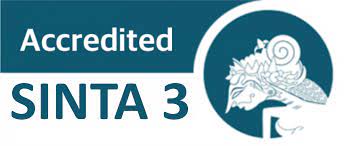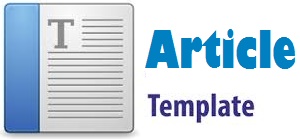إشكالية تعيلم اللغة العربية في المؤسسات التربوية الإسلامية في إندونيسيا
Abstract
التعليم في الإسلام يشمل جميع أبعاد حياة المسلم. إما الأبعاد الإلهية تتعلق بالله، أو الأبعاد الإنسانية المتعلقة بالناس، والأبعاد الكونية المرتبطة بالكون. وبالتالي فإن مادة التربية في الإسلام هي أيضا واسعة جدا تشمل جميع الأبعاد الثلاثة ، وهي بصفة عامة مواد العقيدة والعبادة والأخلاق واللغة والأدب والعلوم والتكنولوجيا. التعليم الإسلامي مصدره بالكامل يستند إلى القرآن والسنة. وبالنظر إلى أن المصدر الرئيسي هو القرآن والسنة ، فإن اللغة العربية تعلمها وفهمها هو ضروري لأنها اللغة المستخدمة في كلا المصدرين. اللغة العربية في إندونيسيا كأكبر دولة إسلامية في العالم، هي واحدة من المواد اللازمة في المناهج الدراسية للمؤسسات التربوية الإسلامية الحكومية ، في حين أن في المؤسسات التربوية العامة هي مواد اختيارية. ولكن بطبيعة الحال في عملية تعليم اللغة العربية واجهت العقبات والصعوبات بالإضافة إلى التحديات ، حيث اللغة العربية هي لغة أجنبية لشعوب إندونيسيا. الإشكاليات والتحديات التي تواجه المؤسسات التربوية الإسلامية في إندونيسيا متنوعة إلى حد كبير، ولكن في الواقع لا تزال هناك أوجه تشابه في المشاكل والتحديات المواجهة بين المؤسسات التعليمية مع بعضها البعض ، بحيث يمكن تجميعها في عدة نقاط رئيسية على النحو التالي: (1) الإشكاليات السياسية؛ (2) الإشكاليات الاجتماعية. (3) الإشكاليات المنهجية. لكن على الرغم من العديد من التحديات والعقبات التي تواجهها ، إلا أن كل ذلك يمكن أن يكون فرصة لتطوير تعليم اللغة العربية في المؤسسات التربوية الإسلامية في إندونيسيا.
Education in Islam covers the entire dimension of a Muslim's life. Bothdimensions ilahiyyahrelate to their relationship to God, or the dimensions of insaniyyah in relation to other human beings, as well as the dimensions of kauniyyah in relation to the universe. So the educational material in Islam is also very broadly covering the three dimensions, which are largely the subject of Aqidah, Ibadah, Morals, Languages and Literature, Science and Technology. Islamic education is entirely sourced and based on the Qur'an and the Sunnah. Given that its main source is the Qur'an and the Sunnah, then a necessity to study and understand the language used by both sources is Arabic. In Indonesia as the world's largest Muslim population, Arabic is one of the mandatory subject material in the national curriculum for Islamic education institutions, while for public education institutions as the subject matter of choice. But of course in the course of learning it encounters obstacles and difficulties as well as challenges, where Arabic is a foreign language morning Indonesian people. This research is a library research (Library Research) that is equipped with data from the field. The data collected are from the literature or from the informants related to this theme. The author describes the data through the deskreptive method and then draws conclusions that the undertaking is done objectively and systematically. The results show that the obstacles and challenges faced by Islamic educational institutions in Indonesia are quite diverse, but they still have similarities between one institution and another, so they can be grouped into the following major points: (1) politically problematic ; (2) problematic in sociological terms; (3) problematic in terms of methodology. But despite the many challenges and obstacles faced, but all of that can be an opportunity to develop Arabic language learning at Islamic educational institutions in Indonesia.
Keywords
Full Text:
PDFReferences
Akhiruddin, KM. Lembaga Pendidikan Islam di Nusantara. Jurnal Tarbiya Vol.1 No.1 (2015)
Bulkisah, Pembelajaran Bahasa Arab Pada Perguruan Tinggi Agama Islam Di Indonesia, Jurnal Ilmiah Didaktika Vol. 12 No.2 (2012)
Fauzi, Moh. Sony. Pesantren Tradisional: Akar Penyebaran Islam dan Bahasa Arab di Indonesia. Jurnal Lingua Vol.2 No.2 (2007)
Fuad, Ah. Zakki. Problematika Pembelajaran Bahasa Arab di Indonesia, Jurnal Edu-Kata Vol.2 No.1 (2015)
Hadi, Syamsul. Bahasa Arab dan Khazanah Sastra Keagamaan di Indonesia. Jurnal Humaniora Vol.11 (1995)
Hidayat, Nandang Sarip. Problematika Pembelajaran Bahasa Arab, Jurnal Pemikiran Islam Vo.37 No.1 2012
Ma’unah, Binti. LembagaPendidikan Islam di Indonesia: Kajian Deskrepsi Analitik Model Lembaga Pendidikan Islam. Jurnal Empirisma vol.24 No.2 (2015)
Muradi, Ahmad. Tujuan Pembelajaran Bahasa Asing (Arab) Di Indonesia. Jurnal Al-Maqoyis Vol.1 No.1 (2013)
Subur, Pendekatan dan Strategi Pembelajaran Bahasa Arab, Jurnal Insania Vol.11 No.2 (2006)
Wahab, Muhbib Abdul. Tantangan dan prospek Pemebelajaran Bahasa Arab di Indonesia,http://www.atida.org/melayu/index.php?view=article&catid=4%3Aarticles&id=50%3Atan, 27 June 2018
Zuhairini. 1992. Sejarah Pendidikan Islam. Jakarta: Bumi Aksara.
Zukhaira, Pengenalan Bahasa Arab Melalui Nyanyian Pada Anak Usia Prasekolah Di TK Islam Mutiara Hati, Jurnal Abdimas Vol.14 No.1 (2010)
https://www.republika.co.id/berita/koran/opinikoran/15/08/25/ntmm4733-masa-depan-bahasa-arab-di-indonesia, 27 June 2018
DOI: https://doi.org/10.18860/abj.v3i2.5964
Refbacks
- There are currently no refbacks.
Copyright (c) 2018 Abjadia : International Journal of Education

This work is licensed under a Creative Commons Attribution-NonCommercial 4.0 International License.
...............................................................................................................................................................
Mailing Address:
Ruang Jurnal Abjadia, Fakultas Ilmu Tarbiyah dan Keguruan (FITK)
Universitas Islam Negeri (UIN) Maulana Malik Ibrahim Malang
Jalan Gajayana 50 Malang 65144, Jawa Timur, Indonesia
Phone/Faximile: (+62341) 552398, Phonsel: +6281333666063
Website: http://ejournal.uin-malang.ac.id/index.php/abjadia
Email: abjadia@uin-malang.com
Abjadia: International Journal of Education. This work is licensed under a Creative Commons Attribution-ShareAlike 4.0 International License.
...............................................................................................................................................................
Indexed by:






